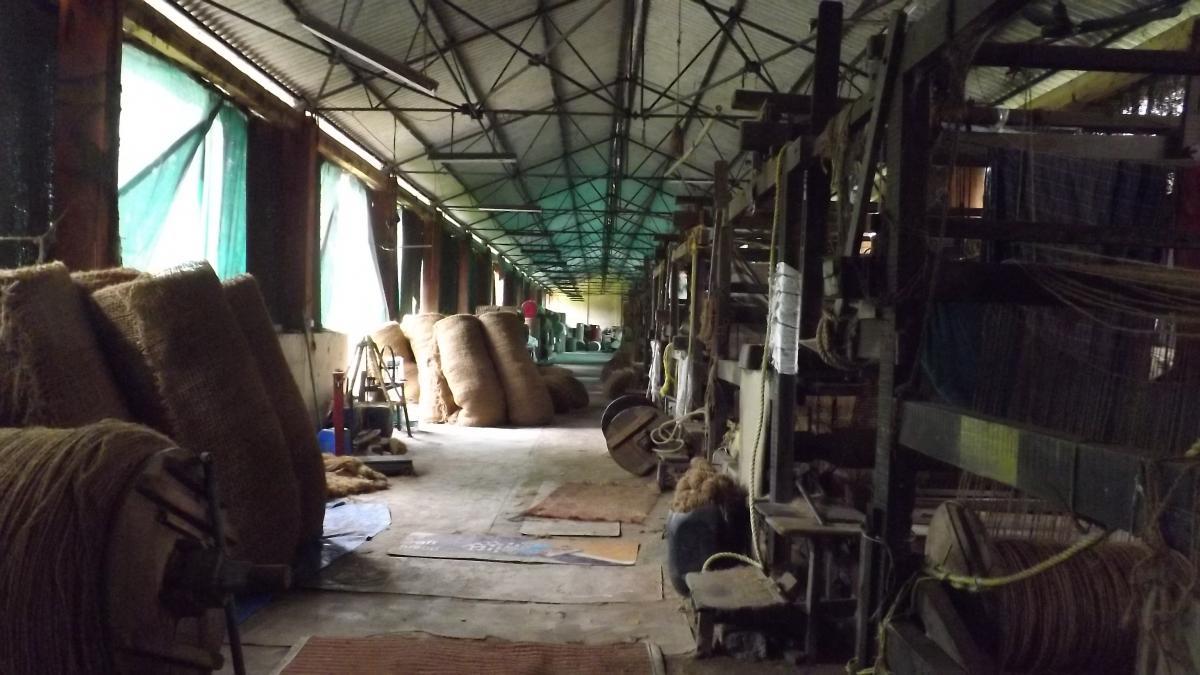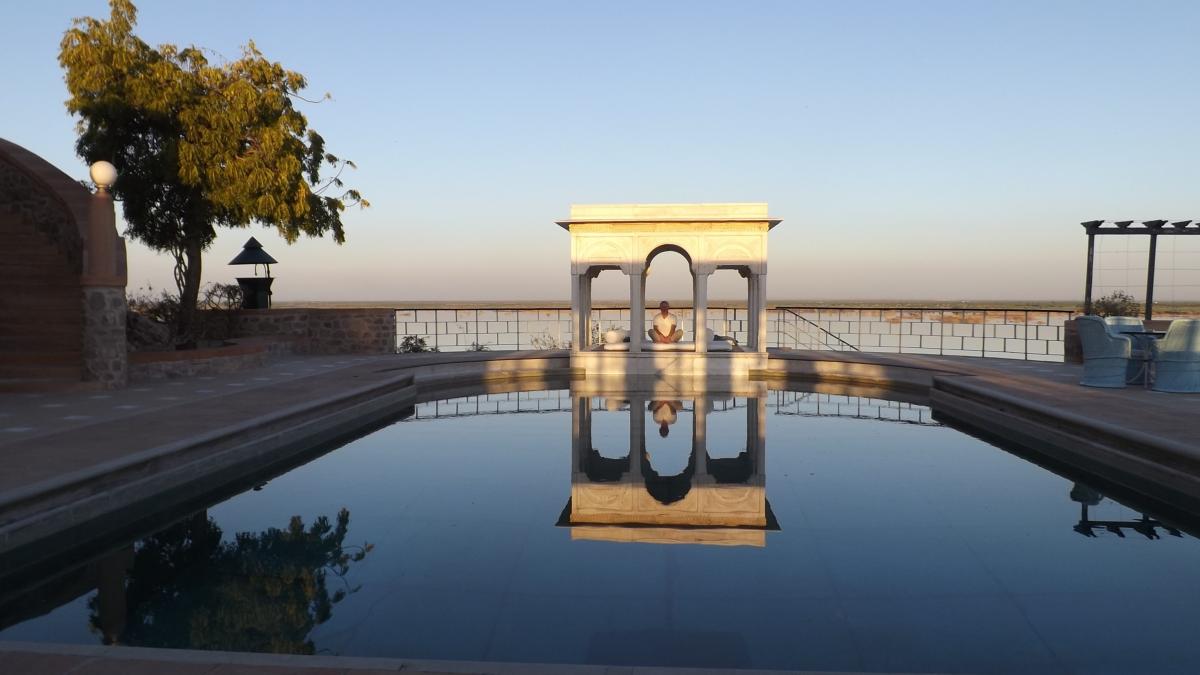Beautiful India before the Virus
Relaxed, skinny dipping in the favourite courtyard pool I looked up at the clear blue sky, listened to the rippling sound of the kingfishers in nearby trees, spied a drongo darting onto a branch, and counted the bee eaters swinging on a palm frond. I was back exactly seven weeks ago at beloved Kumarakom Lake Resort. The water temperature was like cool bath water and I was recovering from two long flights that were without incident: a two-hour drive to Kumarakom with the affable Johnson at the wheel, and now absolute bliss at the very end of January.
KLR as we call the place gave us a tremendous warm welcome, and after a favourite breakfast of curd followed by dosa and tea I was revived. A walk around the paradise of green, a swing on the hammock looking out at the serene Lake Vembanad and now in our favourite cottage. The Spring has arrived early as the laburnum blossom has given a glorious yellow canopy. Friendly Staff greet one and welcome us back and the day progressed - with a short sleep - towards convivial teatime on the lawn. Here again, Staff came up to greet and masala chai made my day! That evening as the sun descended, we returned to the infinity pool to watch. A most perfect sunset captured on film ably assisted by a rum mojito was just so sublime. But, the evening continued with another dip in our pool with the urli candles lit, a shower and then a stunning dinner of seafood moilee and crème caramel! Really, could one ask for anything better at the end of January when back home in Scotland the temperature is freezing and the skies grey?
We were at KLR for two weeks and the days comprised Graham walking in the mornings, me doing my email and social networking whilst I applauded those going diligently to yoga,
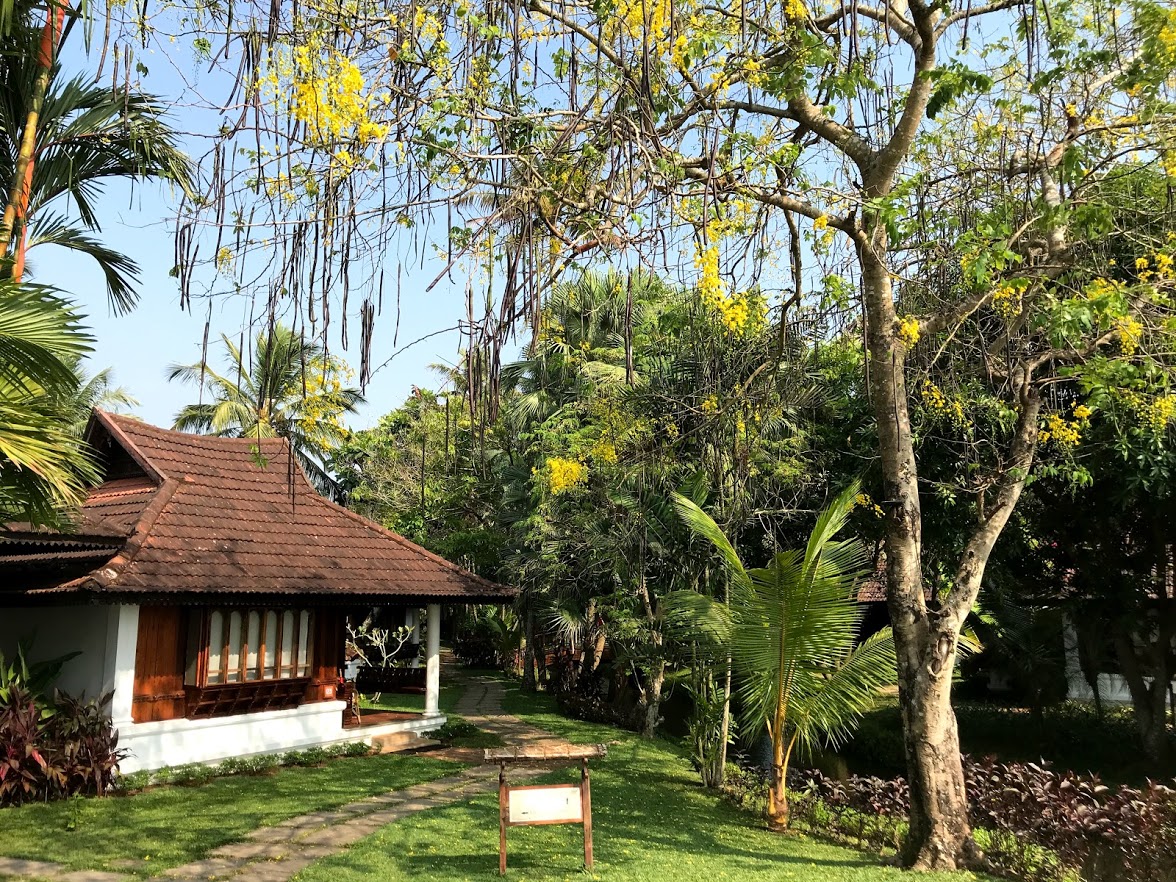
swimming, eating, reading enjoying the garden, some Ayurvedic massage and just enjoying the balmy air and the best of Kerala. We had a most excellent cooking demonstration of Chinese cuisine and we met some very charming interesting people. https://photos.app.goo.gl/mACQXooj5uo42ccE8
We were invited by Dr Benny Kuriakose to visit the Muziris Project at Alleppey where the committee are busy working to restore and renovate the old warehouses and large buildings that were part and parcel of the coir industry. Coir is a product of palms and has played a huge part in household items for generations. Alleppey was a centre for the coir weaving industry until it shifted to Tamil Nadu. The history of this industry is very interesting, and the work of the Project is to be respected and admired. It is never easy to generate interest in something old and seen as outdated but the Muziris Project is committed to restoration of these huge buildings to turn them into museums and help restore some parts of the industry. Alongside that aspect they are cleaning up the canals of Alleppey and restoring religious buildings and helping the townsfolk to understand that they are custodians of their own town and that it could be beautiful being on the sea as well as having canals. It could become a Keralan form of Amsterdam, but it is a long way from that currently. We had previously visited the Muziris Project building restoration and archaeological finds at what was Muziris which is now north of Ernakulam – the modern side of Kochi. That had been a stunning revelation to us in January 2018 – Muziris had been the hub of the trading world in the BCE era of Romans, Greeks, Egyptians, north African and Middle Eastern traders all n their quest for the spices of Kerala, and for some centuries later. The river then changed its course after a dreadful storm and the port became unusable and everything changed. Now, as we know, Kochi has a most magnificent large port with a great deal of heritage surrounding it that harks back to about four hundred years.
All too soon the two weeks were over, and we said our farewells and flew up to Udaipur in Rajasthan to be driven to an intriguing palace that belongs to HH Jodhpur. The two flights were smooth with Indigo, but the drive was a long one and I would recommend others to fly to Jodhpur and take the straight road down to the palace. Jodhpur airport is not so well connected and for us it was not an option.
We arrived at night and were warmly welcomed; the air was substantially cooler than that in Kerala and I needed my fleece. A fine dinner of Lal Maas and a dessert sent us happy to our beds. I knew the morning would provide a wonderful sight. True enough at 0600 hours I came out on to our private balcony and the dawn was just tinging the horizon pink. Clad in a fleece with a cup of tea I patiently waited; all the while the peacocks called, and a huge owl took flight. Slowly the Sardar Samand Lake came alive and the horizon enchanted from pale pink to deep pink to flame and then slowly the sun rose. Oh, it was so special, and I did not tire of that sight for five dawns. Helpful Staff brought a tray of tea, and I noted the tray cloth and tea cosy were in a typical 1930s fabric design! Let me explain …
Sardar Samand Lake Palace was built on the banks of a beautiful lake by Maharaja Umaid Singh in 1933. It is a magnificent poem to the Art Deco, it was originally a hunting lodge and even today it remains the Royal Family’s favourite retreat from busy Jodhpur It houses a collection of African trophies of a bygone era, and has some interesting Snaffles paintings. Now I am fortunate to have a signed large print of Snaffles hunting scene and one of his illustrated books – relics from my late Father’s collection. As well as the lake which had a good amount of water this year it has extensive grounds, a swimming pool with stunning views, a squash court and lovely shaded gardens filled with peacocks. It is a bird watcher’s paradise and we two sat on our comfortable spacious balcony enchanted by the lake in the changing light. The whole palace is in Art Deco style and has been maintained that way. This is familiar to me as I grew up in 1950s Calcutta where a great deal of the buildings and their contents were still Art Deco. The simple food was welcome, the Staff so courteous and eager to please, the grounds spacious, the air clear and the bright sunshine of Rajasthan is always a draw to me.
We went boating on the lake to see the masses of pelicans and other birdlife, we drove into the wild areas of the estate and found it teeming with nilgai (blue buck), chinkara and black buck, and sometimes we espied wild boar. We watched the sun go down on the western horizon on four evenings and enjoyed campfires with baked potatoes and a very welcome bottle of chilled white wine or, a G and T! All the while we talked with the Staff who were keen to communicate and we either spoke in English or Hindi whichever suited the topic. Lounging by the delightful pool reading a book, or just enjoying the peace and tranquillity of this place was an enchantment and all too soon our five nights came to an end and we said our farewell early the next morning and drove to our next destination.
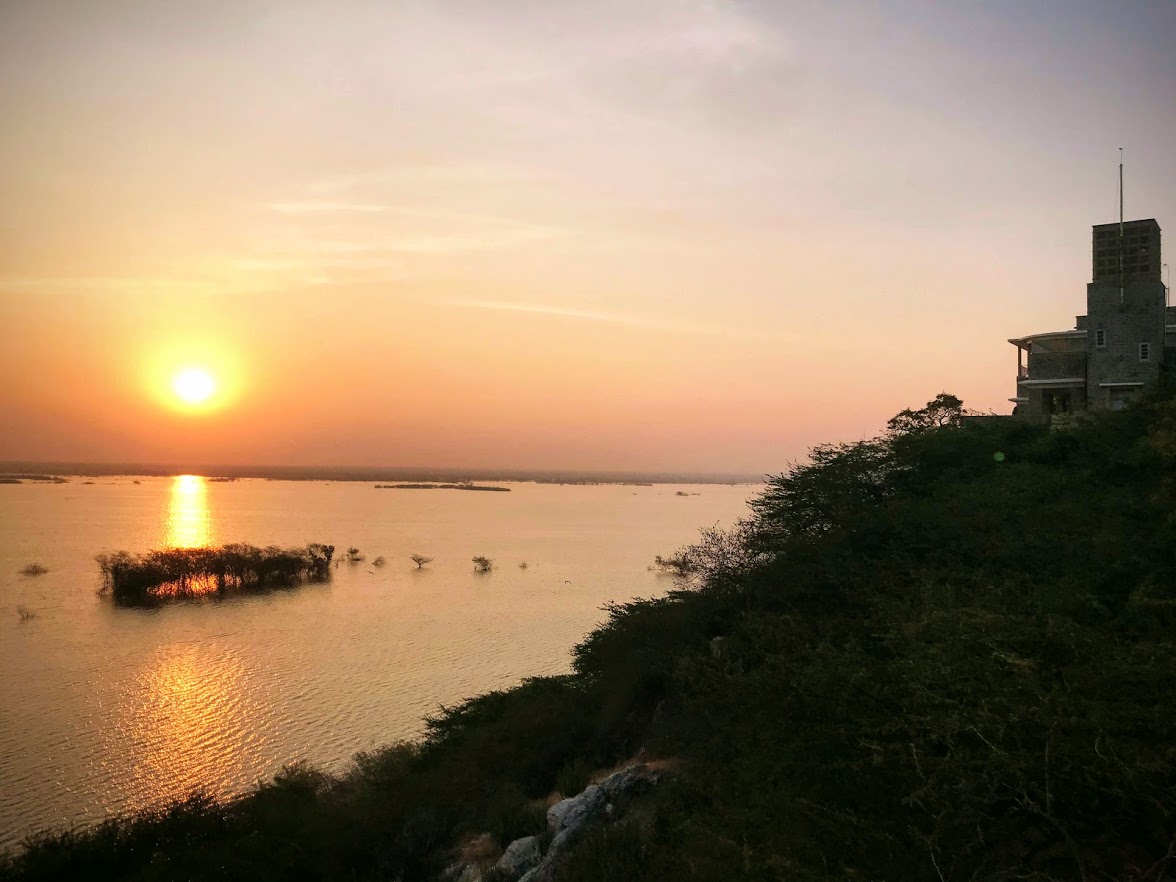
https://photos.app.goo.gl/drpmoL2BpFhKRtMx7
From Sardar Samand Lake Palace we drove to Maharani Bagh; this too belongs to the Jodhpur royal family and was a place I first encountered in November 1997 on my birthday. Since then we had not returned so we arrived after a two-hour drive for some elevenses. It was a delight to see this shaded lovely retreat again.
Maharani Bagh meaning Queen’s Garden, was gifted by Maharaja Takhat Singh of Jodhpur to his Maharani in the 19th century. Beautifully located at the foot of the Aravalli Hills that divide the former kingdoms of Jodhpur and Udaipur, Maharani Bagh remains essentially a fruit orchard. Acres of mango, lime and pomegranate give way to clusters of comfortable cottages and intimate gardens. There is a machan (a device constructed in a tree or on stilts with spectacular views of the hills, and the central dining area is a charming village courtyard complete with thatched roofs and delicious Rajasthani cuisine. The hills and forest have their own share of wildlife to which one can add sambhar and sloth bear, and just maybe the elusive leopard. This is a resort now with a stunning pool, badminton and just the shade and grace of an Indian garden with birdlife and lovely flowers and trees.
We had made just a brief stop, but this is a place for a two-night break and a visit to the famous great white Ranakpur Temple is a must if you have not yet had that opportunity. The Jain Temple is a poem to the soul in white marble. I feel the Jain Community have become avaricious now and their management is not what it was, but nevertheless if not previously visited this is a must. I had seen it in 1997 when all was quiet, clean and a balm to the soul. Even in 2015 we visited when it was a festival day, but the colourful crowds were happy and respectful. Now the management has dissipated that ambience and the Jain Community should take heed and not become complacent.

https://photos.app.goo.gl/kPrLBhibZZq6rMxK7
Eventually after a long drive we came to our next destination which was completely new to us. Rajmahal Bhindar which is east of Udaipur and close to Udaipur airport.
The Jagir of Bhindar was established in the late 16th Century by Maharaja Bhaan Singh ji, the son of the younger brother of the legendary Maharana Pratap, Maharaja Shakti Singhji. Both these brothers were the sons of the ruler of the Mewar Kingdom, Maharana Udai Singh ji. Now Rajmahal Bhindar is being run as a friendly Home Stay by one of the Daughters of the Family, the energetic and friendly Parthvi Bhindar. It is a welcoming sweet place in an ancient palace with glorious food, warm welcome, eager service and lots of different things to experience locally, ancient Bhinder (yes the village is spelled with an e).The village Bhinder is one of the bigger villages of Mewar with a population of about 32000 people. It has about 25 small villages nearby. Travel experts refer to Bhinder as a colourful village always crowded with people, most of them also refer to how India was 50 years ago without the pressing tourism of today. The people greet one but do not harass and I enjoyed watching older folk sitting crossed legged reading their newspapers in the morning and most would greet though some old women were a bit more cautious but the children are always engaging and wanting to interact.
While approaching Rajmahal one drives through the market of Bhinder down very narrow streets; their guests generally love walking around seeing the goldsmith and local spice shops on the way. and the surrounding countryside, birdlife, wildlife, block printing, temples, the miniature painter, the potter, and the excellent tailor who made me a Nehru jacket and the little woman who sews! The Homestay can provide massage, beautician and relaxation. This is a sweet Rajput royal family as hosts; and Bhinder is not far from the international airport, the legendary Chittorgarh Fort, and of course the City of Udaipur. In my mind's eye it is early morning, Graham has gone on his walk through the silent village at that hour except for the sundry cows, the sun is rising, the house martins are arriving on the ancient walls; parakeets are chattering, Muffin the pug is seeking warmth in the sunshine and the tortoises are limbering up for another day! Muffin rations out his affection as he feels he has been caught out before and then the absence of someone sends him off his food!
We spent ten days here and thus came to be part of the daily household. We enjoyed the ambience as I have said and I for one found observing the daily actions and rituals of a noble family in an ancient place very interesting and rewarding. I would recommend this lovely Home Stay for a long stay or to recharge the batteries. There is plenty to do as I have detailed but just relax, sit in the sun, read a book, do one’s social networking – engage with fellow guests and enjoy the farm visit to their own farm where they stable horses which can I believe be ridden by guests – but these are Marwari horses so mind how you go … and the birding visits early in the morning are a delight. We commissioned a miniature painting from the Painter who, after careful enquiry of the size and the price, produced a charming depiction of our favourite cottage at KLR. Now we have it framed by the efficient framers in Udaipur hanging on our bedroom wall! We did however buy three of his conventional miniature paintings and had them framed too – one for us as a memento and another two for gifts. The masseuse lady is the seventh generation to continue that skill and was excellent; the beautician is a youngster from Udaipur who also is skilled. As for my Nehru jacket I am looking forward to wearing it – beautifully made and very elegant. This style of waistcoat or gilet has become increasingly popular in the west.
Parthvi Bhindar is an eager hostess ably assisted by loving parents. Be it relaxation, yoga, heritage or birdlife their homestay provides a restful comfortable home which I recommend with the most excellent food. 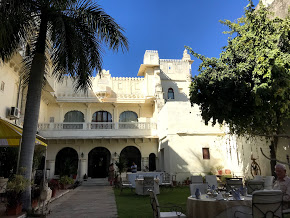 There is of course a laundry facility and Wi-Fi like all other places now in India. When we left Bhindar and its distinguished Family we felt we were leaving old old friends and look forward to seeing them again soon.
There is of course a laundry facility and Wi-Fi like all other places now in India. When we left Bhindar and its distinguished Family we felt we were leaving old old friends and look forward to seeing them again soon. 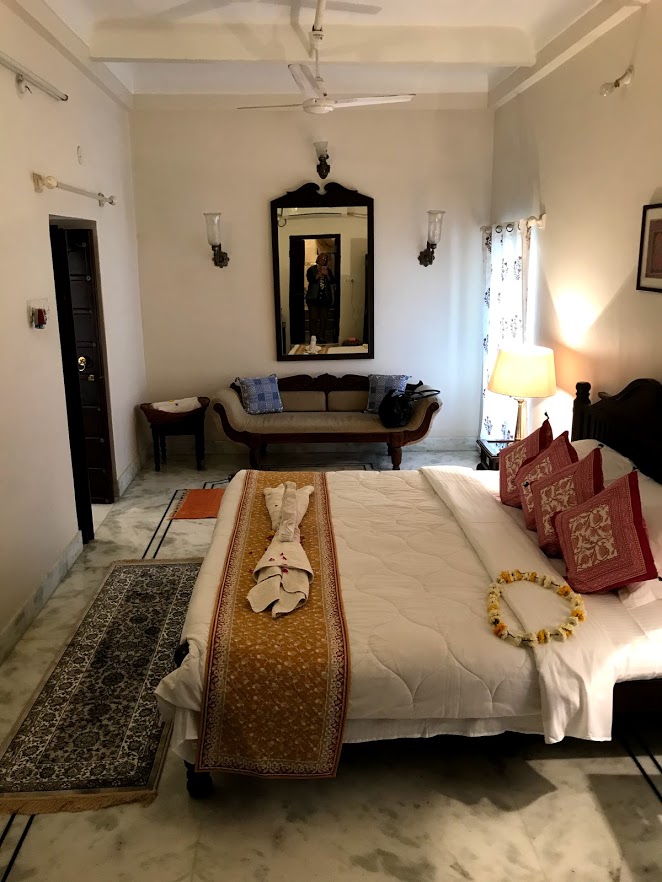 https://photos.app.goo.gl/6PWSyj56eTrgX6UX7
https://photos.app.goo.gl/6PWSyj56eTrgX6UX7
We drove to Udaipur at the end of February and it is always a great pleasure to return to Udaipur which we both know and love. On this occasion we were attending the Maharana Mewar Foundation Annual Award ceremony for the second occasion.
We had the great pleasure of staying in the Shiv Niwas Palace. Shiv Niwas Palace has now become a home from home for us. I was more familiar with Fateh Prakash on previous occasions but having just stayed at this lovely heritage property I am delighted to recommend it. We had such a welcoming lovely time with great service and cuisine in palatial surroundings. The crescent-shaped palace, built in the early 20th century, in the reign of Maharana Fateh Singh has been meticulously maintained and preserved. Shiv Niwas Palace is the flag ship now of HRH Group of Hotels and offers a spa and wellness centre, a large outdoor swimming pool and free Wi-Fi throughout the property. This architectural marvel offers elegant suites featuring traditional décor. They are equipped with air-conditioning and feature a flat-screen TV, minibar and wardrobe. The ensuite bathrooms have bath and shower facilities and contain complimentary toiletries. Lake Pichola is just there to feast your eyes on. Maharana Pratap Airport is 17.4 miles away and Udaipur Railway Station is 2.2 miles away. The hotel’s Paantya restaurant serves delicious Mughlai, Rajasthani and Continental fare. The Pool Deck serves light snacks and dinner as well as refreshing drinks. The Palki Khanna restaurant in the Manek Chowk serves a variety of cuisines from around Europe should one want a change of venue.

On this occasion we had the pleasure of visiting the very new Armoury which is still to be completed. Truly it has been achieved with great professionalism and with British expertise and once open will be intriguing and so worthwhile. The City Palace of Udaipur is a treasure trove of wonderful heritage and has been very well curated and I have seen it develop over twenty-three years to its present heights. However, my deep pleasure derived from making a cup of tea in the morning at about 06.30 and watching the sun come up with the birds in the trees opposite. The sunrise tinges the buildings on the lake pink and the parakeets, and the hornbills become active and sometimes a kite comes and sits on the big tree opposite our suite. Gra would continue with his morning walk routine and enjoyed observing all the morning rituals. I looked forward to a perfect breakfast – the Eggs Benedict is perfection! Then of an evening about 18.20 hours I would stand on our private balcony and watch the sun set and that is so beautiful. I have written about Udaipur often with affection. On this occasion we also visited the Monsoon Palace far on the peak of the hill opposite. This was the idea of a short lived but wise Maharana in the 19th century, and now belongs to the state but is worth the visit for its panoramic views down on to the lakes. To be Custodians of India and Rajasthan’s heritage demands commitment and is challenging but very worthwhile. https://photos.app.goo.gl/a2pWhunAGykBJ6qx9
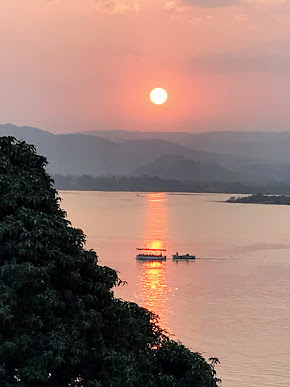
Some places in India go to my heart and now the four places of which I have written are firmly established there – as ‘homes from home’ to us both.
All too soon it was time to leave for Mumbai to spend a night and depart the next morning on an Emirates flight back home. Alarming news had been dominating social networks about the Coronavirus and its rapid travel through from China to other countries where it had engulfed authorities. It was obvious that this was a huge global challenge so for us to return home on the 6th March was a great relief, but we wore masks the whole way on our flights and were diligent about hand washing. Now we are self-quarantined at home as we are in the vulnerable age group and asked to refrain from socialising and we are determined to try and not get this awful illness – the young largely bounce back but the 70s age group onwards have severe challenges.
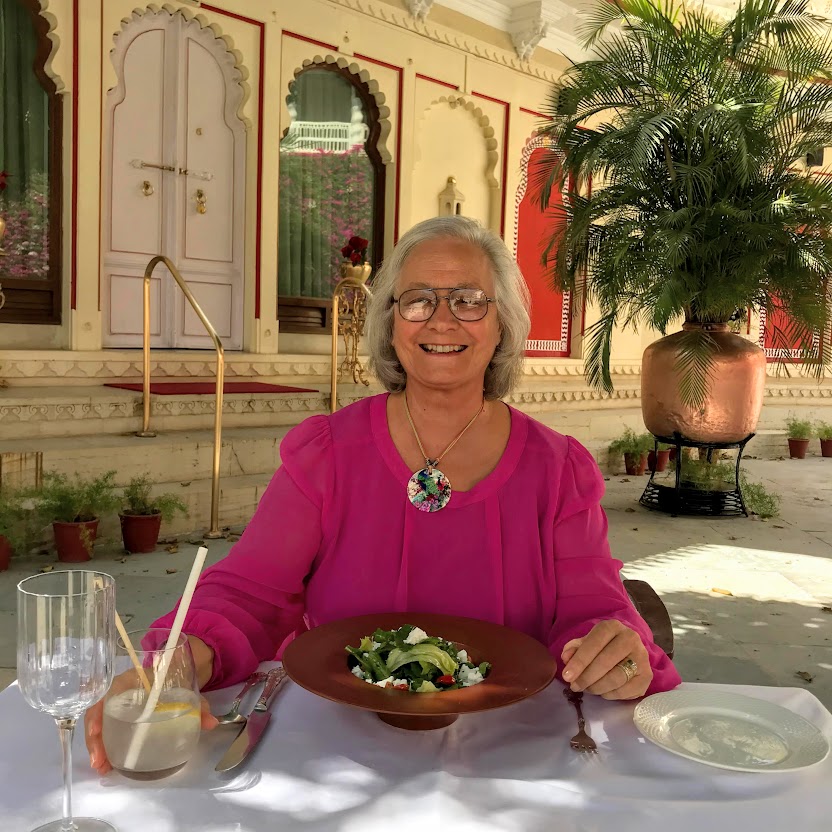
The situation is at crisis proportions as I write, and I think back to the day of arrival in India and that clear blue sky without a dark cloud to threaten. Now we globally have a huge health challenge but also a massive financial challenge as peoples’ livelihoods are threatened everywhere by everyone not being able to go about daily lives and travel and eat out or go to the theatre or attend clinics and of course schooling and tertiary education is impacted too. It is a dark time. We must keep safe.
But this challenge will pass, and I will be very happy to help promote India once again when it does.





